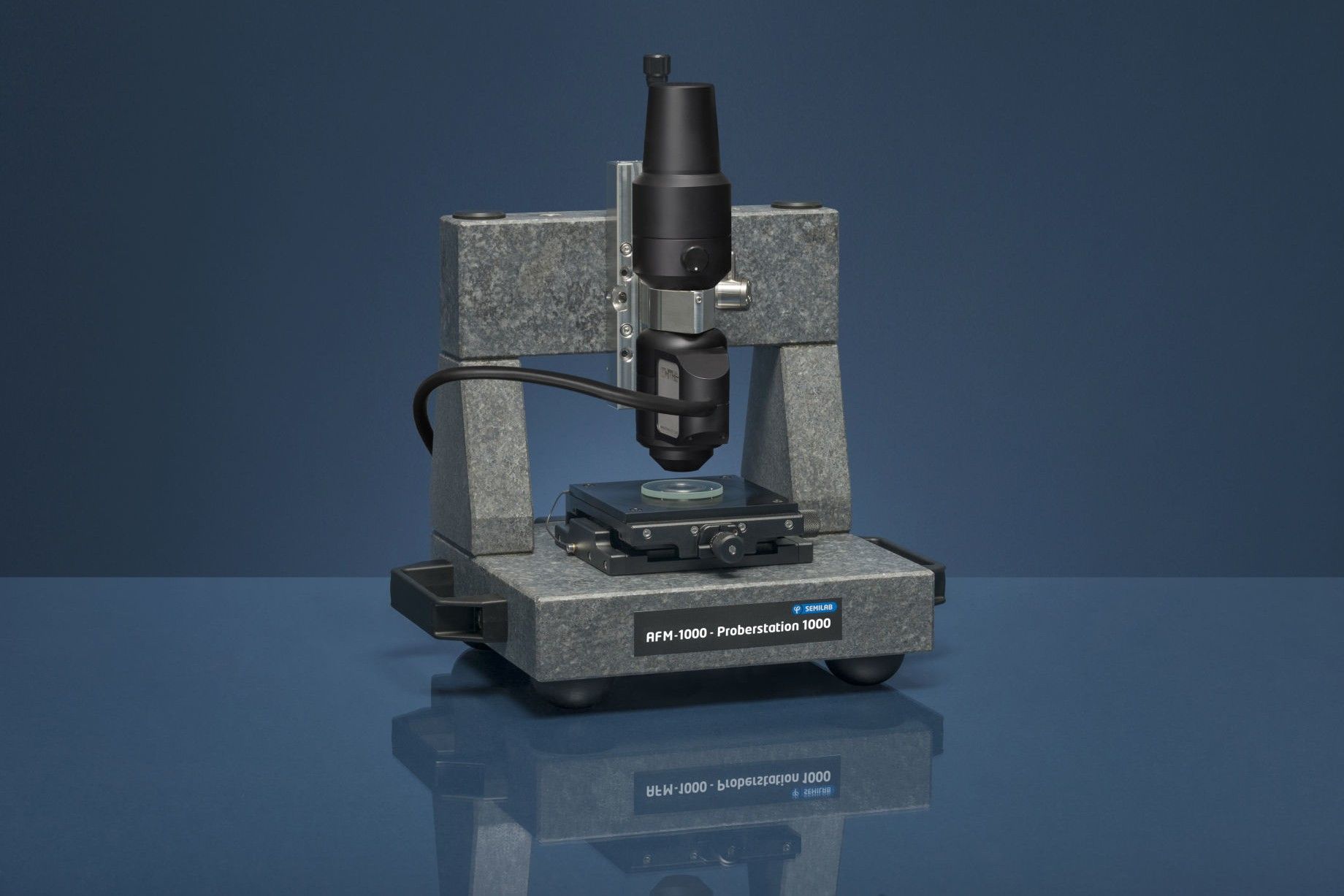
What is an Atomic Force Microscope (AFM)? An Atomic Force Microscope (AFM) is a powerful tool that allows scientists to see and manipulate materials at the atomic level. AFMs use a tiny, sharp tip to scan surfaces, creating detailed images of atoms and molecules. Unlike traditional microscopes that rely on light or electrons, AFMs use physical interaction between the tip and the sample. This makes them incredibly versatile, capable of working with a wide range of materials, from metals to biological samples. AFMs are essential in fields like nanotechnology, materials science, and biology, helping researchers understand the world at the smallest scales.
What is an Atomic Force Microscope?
An Atomic Force Microscope (AFM) is a powerful tool used to visualize surfaces at the atomic level. It provides three-dimensional images with incredible detail, allowing scientists to study materials at the nanoscale.
- The AFM was invented in 1986 by Gerd Binnig, Calvin Quate, and Christoph Gerber.
- It can measure forces as small as a few piconewtons.
- AFM operates by scanning a sharp tip over a surface to create an image.
- The tip used in AFM is often made of silicon or silicon nitride.
- AFM can achieve a resolution of fractions of a nanometer, much smaller than the wavelength of visible light.
How Does an Atomic Force Microscope Work?
Understanding the working principles of an AFM helps appreciate its capabilities. The process involves a delicate balance of forces and precision movements.
- AFM uses a cantilever with a sharp tip to scan the surface of a sample.
- A laser beam reflects off the back of the cantilever to detect its movements.
- The cantilever deflects due to forces between the tip and the sample surface.
- These deflections are measured to create a topographical map of the surface.
- AFM can operate in different modes, including contact mode, tapping mode, and non-contact mode.
Applications of Atomic Force Microscopy
AFM has a wide range of applications across various scientific fields. Its ability to provide detailed surface images makes it invaluable for research and development.
- AFM is used in materials science to study the properties of new materials.
- In biology, AFM helps visualize the structures of cells and proteins.
- AFM can measure mechanical properties like hardness and elasticity at the nanoscale.
- It is used in semiconductor manufacturing to inspect and measure microchips.
- AFM aids in the development of nanotechnology by providing insights into nanoscale structures.
Advantages of Using an Atomic Force Microscope
AFM offers several benefits over other types of microscopes. Its unique capabilities make it a preferred choice for many researchers.
- AFM does not require a vacuum environment, unlike electron microscopes.
- It can image both conductive and non-conductive surfaces.
- AFM provides true three-dimensional surface profiles.
- It can operate in various environments, including air, liquid, and vacuum.
- AFM can measure not only topography but also other properties like friction and magnetic forces.
Challenges and Limitations of Atomic Force Microscopy
Despite its advantages, AFM has some limitations and challenges. Understanding these helps in optimizing its use and overcoming potential issues.
- AFM scanning can be slow, taking several minutes to hours for high-resolution images.
- The sharp tip can wear out or become contaminated, affecting image quality.
- AFM requires careful calibration and maintenance to ensure accurate measurements.
- The maximum scan size is limited, typically to a few micrometers.
- AFM images can be affected by thermal drift and vibrations.
Innovations and Future Directions in AFM Technology
Continuous advancements in AFM technology are expanding its capabilities and applications. Innovations aim to address current limitations and open new possibilities.
- Researchers are developing faster scanning techniques to reduce imaging time.
- New materials for AFM tips are being explored to improve durability and performance.
- Integration with other microscopy techniques, like optical and electron microscopy, is being pursued.
- Advances in software are enhancing image processing and data analysis.
- AFM is being adapted for use in harsh environments, such as extreme temperatures and pressures.
Interesting Facts About Atomic Force Microscopy
Here are some intriguing tidbits about AFM that highlight its unique aspects and contributions to science.
- AFM can be used to manipulate individual atoms and molecules.
- It has been used to create nanoscale art, such as writing and drawing at the atomic level.
- AFM played a crucial role in the development of graphene, a single layer of carbon atoms with remarkable properties.
The Power of Atomic Force Microscopes
Atomic force microscopes (AFMs) have revolutionized how we see the microscopic world. They allow scientists to observe surfaces at an atomic level, providing insights into materials, biology, and nanotechnology. AFMs use a sharp tip to scan surfaces, creating detailed images and measuring forces with incredible precision. This technology has applications in various fields, from medical research to materials science.
Understanding AFMs can open doors to new discoveries and innovations. Their ability to manipulate and measure tiny structures makes them invaluable tools in modern science. As technology advances, AFMs will likely become even more powerful and versatile, pushing the boundaries of what we can explore and understand.
So, whether you're a student, researcher, or just curious about science, appreciating the capabilities of AFMs can deepen your knowledge of the microscopic world and its endless possibilities.
Was this page helpful?
Our commitment to delivering trustworthy and engaging content is at the heart of what we do. Each fact on our site is contributed by real users like you, bringing a wealth of diverse insights and information. To ensure the highest standards of accuracy and reliability, our dedicated editors meticulously review each submission. This process guarantees that the facts we share are not only fascinating but also credible. Trust in our commitment to quality and authenticity as you explore and learn with us.
